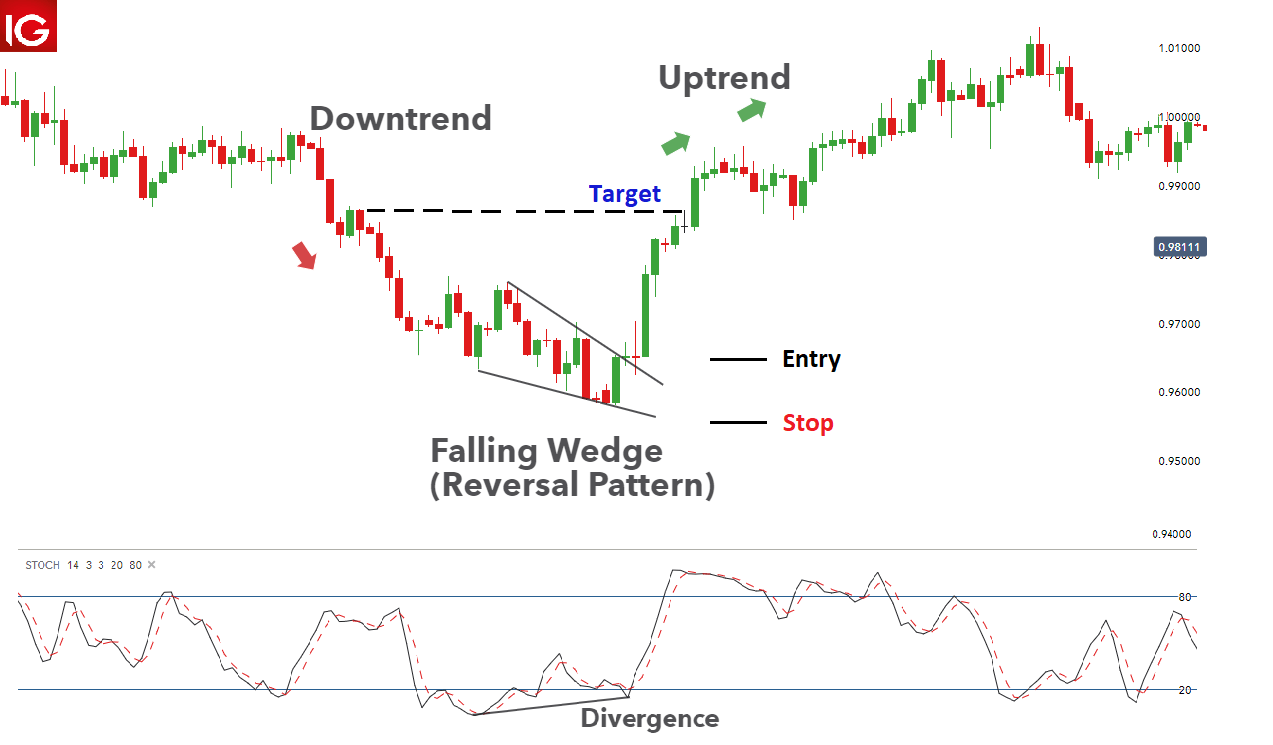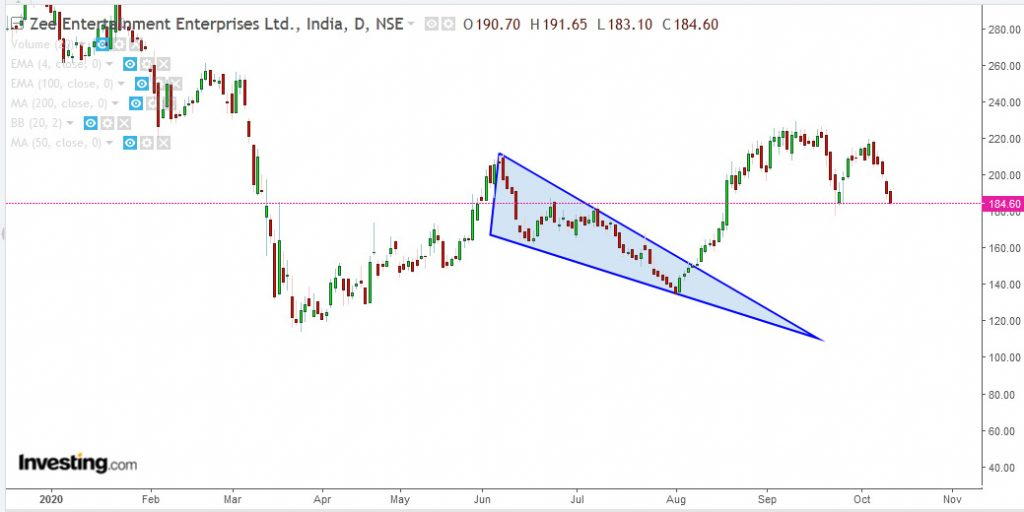
What did we learn so far these Japanese candlestick chart patterns?Ī rising wedge formed after an uptrend usually leads to a REVERSAL (downtrend) while a rising wedge formed during a downtrend typically results in a CONTINUATION (downtrend).

See how the price made a nice move down that’s the same height as the wedge? That’s why it’s called a continuation signal yo! In this case, the price broke to the down side and the downtrend continued. Only this time it acts as a bearish continuation signal.Īs you can see, the price came from a downtrend before consolidating and sketching higher highs and even higher lows. Now let’s take a look at another example of a rising wedge formation. Just like in the other forex trading chart patterns we discussed earlier, the price movement after the breakout is approximately the same magnitude as the height of the formation. They pushed the price down to break the trend line, indicating that a downtrend may be in the cards. See how price broke down to the downside? That means there are more forex traders desperate to be short than be long! Notice how price action is forming new highs, but at a much slower pace than when price makes higher lows. In this first example, a rising wedge formed at the end of an uptrend. On the other hand, if it forms during a downtrend, it could signal a continuation of the down move.Įither way, the important thing is that, when you spot this forex trading chart pattern, you’re ready with your entry orders! If the rising wedge forms after an uptrend, it’s usually a bearish reversal pattern. With prices consolidating, we know that a big splash is coming, so we can expect a breakout to either the top or bottom. This leads to a wedge-like formation, which is exactly where the chart pattern gets its name from! This indicates that higher lows are being formed faster than higher highs. Here, the slope of the support line is steeper than that of the resistance. Rising WedgeĪ rising wedge is formed when price consolidates between upward sloping support and resistance lines.

Wedges can serve as either continuation or reversal patterns. When you encounter this formation, it signals that forex traders are still deciding where to take the pair next.Ī Falling Wedge is a bullish chart pattern that takes place in an upward trend, and the lines slope down.Ī Rising Wedge is a bearish chart pattern that’s found in a downward trend, and the lines slope up. Wedges signal a pause in the current trend. It means that the magnitude of price movement within the Wedge pattern is decreasing. There is, however, one condition that the price must break out of the wedge pattern at least once before.In a Wedge chart pattern, two trend lines converge. They should then superimpose this distance at the current price, where the top end of the line will be the target. To set target levels, traders need to measure the vertical distance between the support and resistance lines at the starting point of the wedge. Traders can put a stop loss below the lowest traded price in the wedge or even below the wedge if it suits their risk profile. The trading volume should lessen during the falling wedge formation as the price has entered a consolidation stage before the bullish breakout. Investors should also monitor the trading volumes. The two lines will be sloping downwards and converging. To identify a falling wedge pattern, draw lines linking lower highs and lower lows using a trendline.


Our task lies in identifying the point at which the pattern would complete itself, i.e., the correction would be over, the price would find a dip, and investors would start buying again. How do we identify a falling wedge pattern?Ī falling wedge that appears after a bearish trend is a continuation pattern, and the one that appears after a bullish trend is a reversal pattern.


 0 kommentar(er)
0 kommentar(er)
